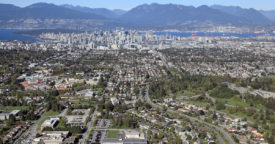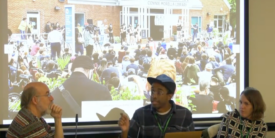Clark:
Dan Bertolet over at Citytank has one of the best pieces on housing affordability since David Sucher’s enlightened rant from seven years ago.
Cost to prevent all future extinctions: $11 per person. (Can this really be true??)
Pam:
A recent report on obesity in the US, by the Trust for America’s Health and the Robert Wood Johnson Foundation, has some scary statistics. Adult obesity rates in 2011 for residents of Washington, Oregon, and Idaho were each approximately 27 percent, ranking those states’ residents a bit slimmer than the median in all US states.
But, in projections for 2030, rates rise to 56 percent, 49 percent, and 53 percent respectively. That corresponds to some big increases in disease rates; health care costs, to the tune of $48-66 billion a year by 2030 for treating preventable obesity-related diseases in the US; and losses in economic productivity, estimated at $390-$580 billion annually by 2030. The report makes a number of policy recommendations, largely centered on food. Disappointingly, only one of their seven recommendations even touches on creating active transportation options.
Eric dP:
This Upton Sinclair-worthy account of slipshod oversight and weak regulation of food safety made my skin crawl. Get beyond the ick factor for a moment and you realize that food safety is a perfect example of a larger problem: as Americans, our lives can be directly threatened by the twin hazards of irresponsible deregulation and chronic under-funding of government agencies.
The LA Times has a good piece on the increasing willingness of climate scientists to connect weather events to long-term climate disruption.
Not that either of the presidential candidates are noticing. Both Obama and Romney have done an absolutely abysmal — one might even say reckless or immoral — job of dealing with climate and energy issues in the debates. Lisa Hymas has a depressing account of the facts, as do Ed Kilgore and Kevin Drum.
I’ll add an endorsement for one of Clark’s picks: Dan Bertolet’s recent piece, The Zen of Affordable Housing has the feel of an article that we’ll all be referring to for years to come. It’s a witty, thoughtful, and surprisingly complete account of the affordability problem that plagues Seattle and so many other dynamic cities. All that in a single blog post.
But affordability isn’t our biggest problem. We should really be worried that giant spiders are taking over Seattle.
Alan:
This academic history of obstructionism since the beginning of the US Congress isn’t worth reading yourself. But I read it, and here’s what’s interesting about it. In the 1800s, the House of Representatives was much more prone to obstruction than the US Senate. Filibustering and other forms of obstructionism rose steadily over the century, until a four-year crisis of epic obstructionism led to deep, majoritarian reforms in the 1890s. The reforms came about in what amounted to a parliamentary coup, overthrowing the old rules and instituting new, majoritarian ones by the exercise of precedent-breaking leadership by the speaker of the house, ratified by a simple majority of the house. The House as we know it—efficient, swift, and winner-take-all—dates from this 1894 coup.
Since 1900, the US Senate has been following the same century-long trajectory of rising obstructionism, and recent years have approximated the “clusterbuster” of gridlock that occasioned reform in the US House in the 1890s. The parallel will be complete when the Senate majority decides that creating a chamber capable of governing is worth losing the personal prerogatives of the filibuster.
Anna:
In low-lying communities in Florida, scientists and public officials are getting serious—and seriously worried—about the realities of sea level rise.
War on Women Infographic: Who gets hurt when family planning gets gutted? (Hint: Poor and uninsured women of color are hit hardest).
It’s the Science, Stupid…Shawn Lawrence Otto points out in Scientific American that half the economic growth in the US since World War II can be traced to innovations in science and technology. Nonetheless, anti-science beliefs seem to be overwhelming American democracy—and stalling economic and environmental progress.
I can still hear Carl Sagan’s voice in my head, saying “billions and billions…” Sagan had a knack for communicating science to the uninitiated, but big numbers can be hard for anybody to fathom. Steven Strogatz ruminates on visualizing vastness, using Sagan’s Cornell Commons model of the solar system as a starting point and ending up at the current wealth discrepancies among earth dwellers:
The distribution of wealth in the United States spans at least 10 powers of 10, ranging from people whose net worth is measured in tens of billions of dollars, to those with barely a dollar to their names. This disparity dwarfs even the six powers of 10 in the solar system.
Finally, what’s the emissions cost to our tweets, emails, and clouds filled with photos and data? And what’s an optimistic outlook for greening all those power-sucking data centers most of us would rather keep out of sight and out of mind?








